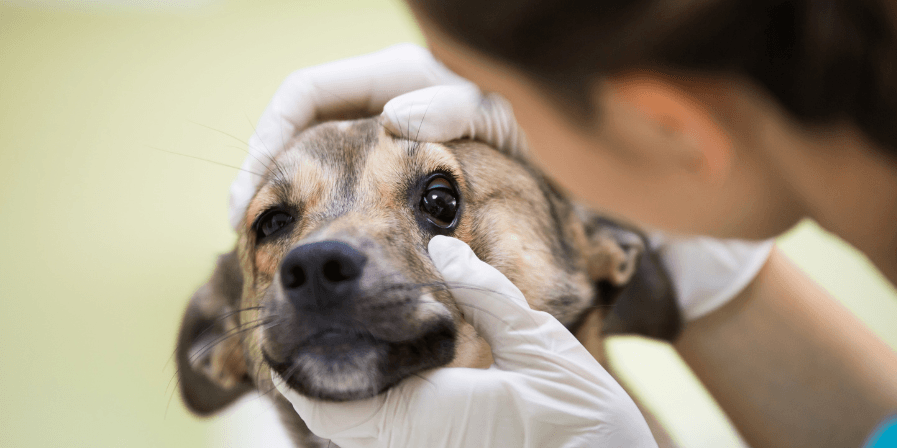How can you tell if your dogs have bad eyesight?

Recognizing vision problems in your dog can help you address issues early and ensure they get the care they need. Here are the key signs and symptoms that may indicate your dog has bad eyesight:
How can you tell if your dogs have bad eyesight?
Key Signs of Vision Problems in Dogs
- Bumping Into Objects: • Dogs with poor vision may frequently bump into furniture, walls, or other objects, especially in unfamiliar environments.
- Difficulty Navigating: • Eyesight problems in dogs can lead to difficulty finding their way around familiar places, especially in low light or dark environments. • Hesitancy when approaching stairs, curbs, or other obstacles.
- Changes in Behavior: • Increased clumsiness or anxiety. • Reluctance to jump on or off furniture. • Excessive barking or whining when in new environments.
- Eye Appearance: • Cloudiness or whiteness in the eyes, which can indicate cataracts. • Redness or inflammation. • Discharge or crustiness around the eyes. • Visible changes like bulging eyes or an uneven appearance.
- Unusual Eye Movements: • Constantly moving their eyes back and forth (nystagmus). • Eyes not focusing properly or wandering.
- Squinting or Pawing at Eyes: • Frequent squinting, blinking, or pawing at their eyes may indicate discomfort or vision problems. • Sensitivity to light.
- Change in Pupils: • Unequal pupil sizes (anisocoria). • Pupils not responding to light as expected is a symptom of dog vision problem.
- Loss of Interest in Play: • Less interest in toys, catching objects, or playing fetch. • Difficulty finding toys or treats.
- Confusion or Disorientation: • Appearing lost or disoriented in familiar surroundings. • Sticking close to walls or furniture for guidance.
- Behavioral Changes: • Increased dependence on their sense of smell or hearing. • Following you more closely or being hesitant to move away from you. Common Eye Problems in Dogs
- Cataracts
- Glaucoma
- Progressive Retinal Atrophy (PRA)
- Dry Eye (Keratoconjunctivitis Sicca)
- Retinal Dysplasia
- Conjunctivitis
When to See a Veterinarian? If you notice any of these signs or suspect that your dog has vision problems, it’s important to consult a veterinarian. A vet can perform a thorough eye examination and provide an accurate diagnosis and treatment plan.
Tips for Supporting Dogs with Vision Problems
- Maintain a Consistent Environment: • Avoid rearranging furniture and keep the layout of your home consistent. • Use textured rugs to help your dog navigate.
- Use Verbal Cues: • Train your dog to respond to verbal commands to help them navigate safely.
- Provide Safe Toys: • Use toys that make noise or have a strong scent to engage your dog’s other senses.
- Regular Check-ups: • Schedule regular veterinary visits to monitor your dog’s eye health and overall well-being.
- Protect from Hazards: • Remove sharp objects and keep dangerous areas, such as stairs or pools, off-limits without supervision.
By staying vigilant and proactive about your dog's eye health, you can help ensure they maintain good vision and overall well-being. Regular check-ups with a veterinarian, especially one specializing in pet eye health, are crucial for early detection and treatment of any issues.
FAQ’s:
-
How can I confirm if my dog has eyesight issues? • Veterinary Visit: Schedule an appointment with your vet for a comprehensive eye examination. • Observational Tests: Your vet may conduct simple tests like observing your dog's reactions to hand movements or light to assess vision.
-
What should I do if my dog’s eyes appear red or swollen? • Immediate Vet Consultation: Redness or swelling can indicate an infection or other serious condition. Prompt veterinary attention is necessary for proper diagnosis and treatment
You can visit us for concerns related to your pet’s eyehealth in Delhi, Gurgaon, and Noida. Reach out to us at 9311560101 or visit our website at dccpets.in


 How can we help?
How can we help?